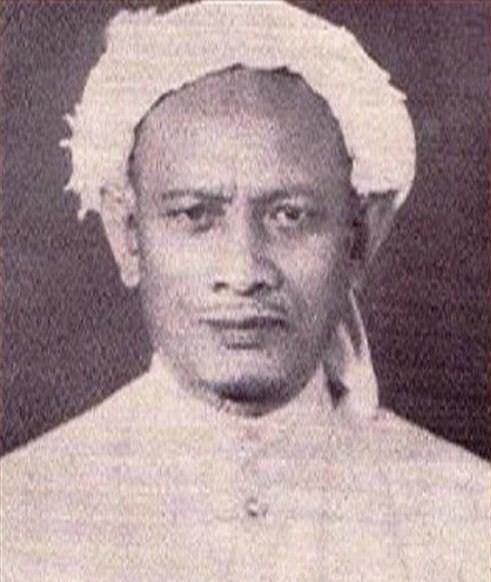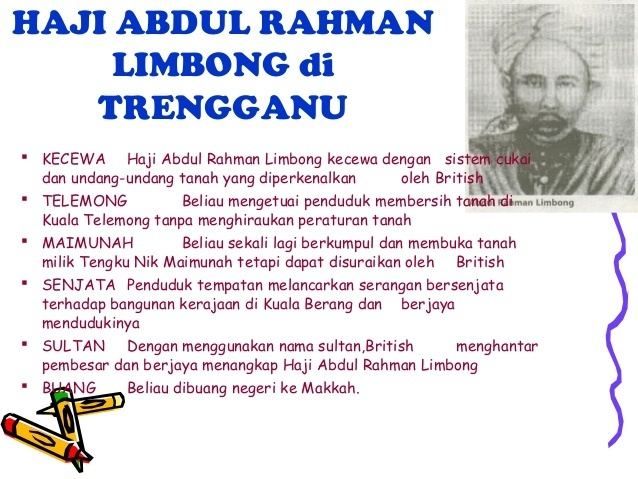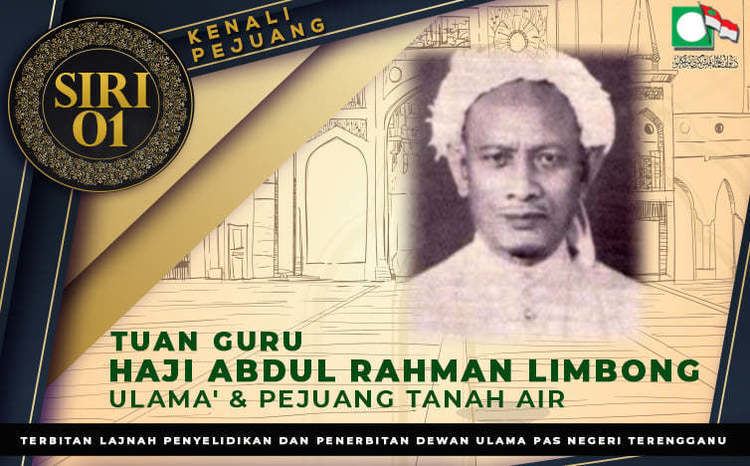Name Haji Rahman | ||
 | ||
Other names Haji Abdul Rahman Limbong Occupation farmer, trader, religious teacher Similar Dato' Bahaman, Dol Said, Antanum | ||
Perjuangan haji abdul rahman limbong
Haji Abdul Rahman bin Haji Abdul Hamid (—1929) was an ulema, known as Haji Abdul Rahman Limbong because he visited Limbong, Kemaman to teach Islam and start trading. From 1922 until 1928, he was a resistance leader seeking to resist laws and changes introduced by the British.
Contents
- Perjuangan haji abdul rahman limbong
- Early life
- British occupation
- Insurgency
- Aftermath and final years
- References

Early life

Haji Abdul Rahman bin Haji Abdul Hamid was born in Telemong, Terengganu. He was much respected and loved by Malay society.

Prior to the British arrival, Terengganu had Islam-based rules and administrations. The society freely opened up their land for farming and collecting crops.
British occupation

When the British came, new laws about the ways to open up land were introduced. One of them involves paying a tax to the government before using it. This new law makes it difficult for everyone, especially poor farmers. To make things worse, the permission letters and passes from the government for opening up lands were also introduced. Despite the laws being introduced by the British, Haji Abdul Rahman Limbong fought to protect the livelihood and means of survival of farmers, claiming that land only belongs to Allah, and eventually to those who work on them.
In 1922, Haji Abdul Rahman Limbong represented one of the 43 farmers being put to trial in a court for doing farming without permission. In numerous hearings that followed, no results had been given.
In 1925, about 300 to 500 farmers cleared Tengku Haji Nik's land without permission from the government.
Insurgency
In 1928, following a series of restrictions and crackdowns by the British, Haji Abdul Rahman Limbong assembled about 1,000 people in Kampung Buluh, to launch their resistance to get the British out of their state. They attacked the police station in Kuala Berang, and conquered it, raising a red flag in its place. After the successful attack, they moved on to Kuala Terengganu, to persuade the Sultan to endorse their actions.
Meanwhile, another group of resistance fighters was formed at Kampung Pelam, Telemong. The British representative sent a police from the state's capital to Kuala Berang to get aid from the Federated Malay States.
As the resistance forces approached Padang Kachong, Kuala Telemong, the police defended against the resistance. Most of the resistance fighters died in the battle, and finally, the resistance retreated.
Aftermath and final years
All of the leaders involved in the insurgency of Terengganu citizenry had been found and put on trial. The majority of them were sentenced to lifelong imprisonment.
Haji Abdul Rahman Limbong, who was one of them was found guilty, but was not sentenced like most of his leaders. Instead, he was exiled from Terengganu to Mecca, where he continued to teach Islam, until his death in 1929.
